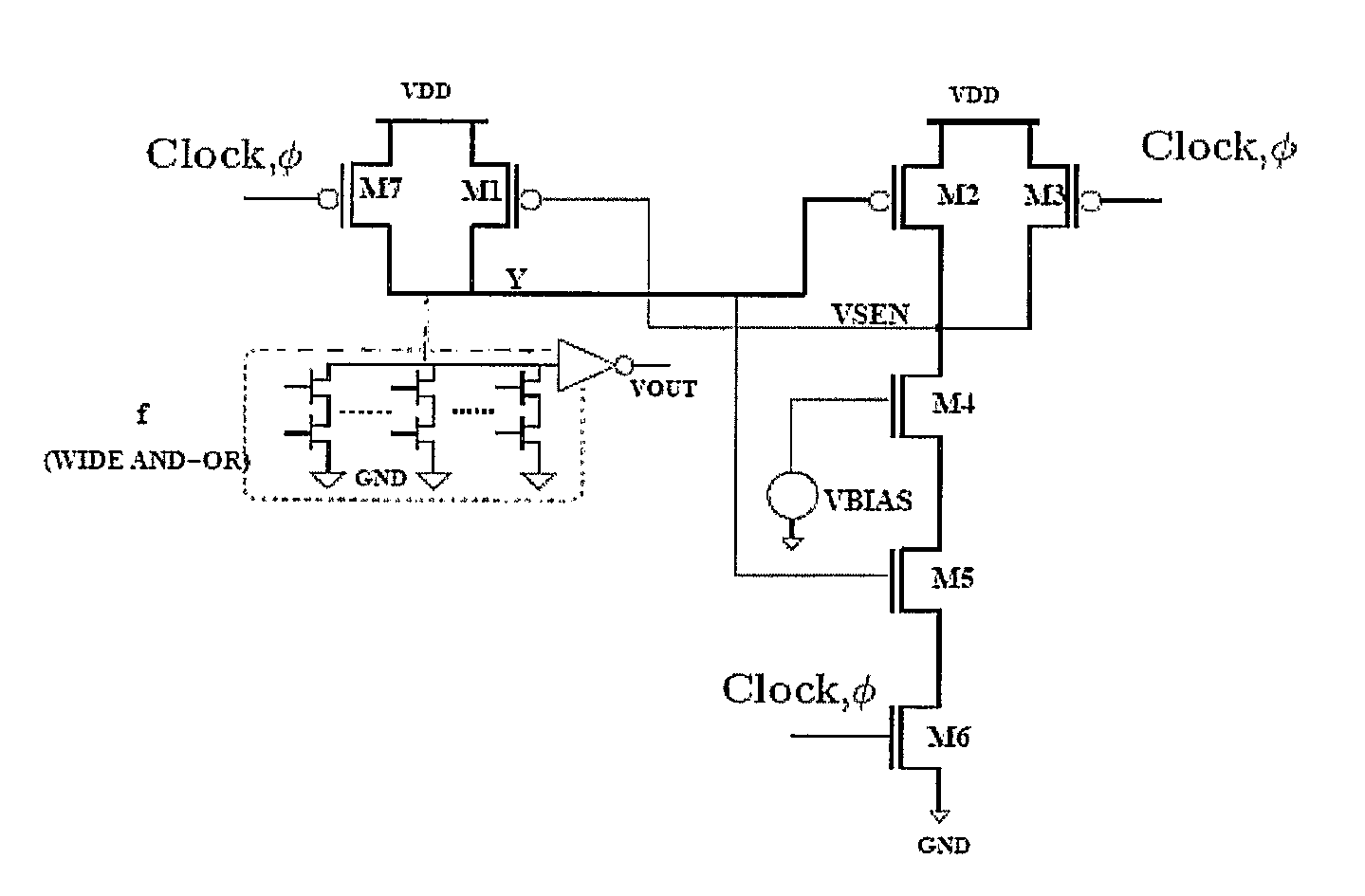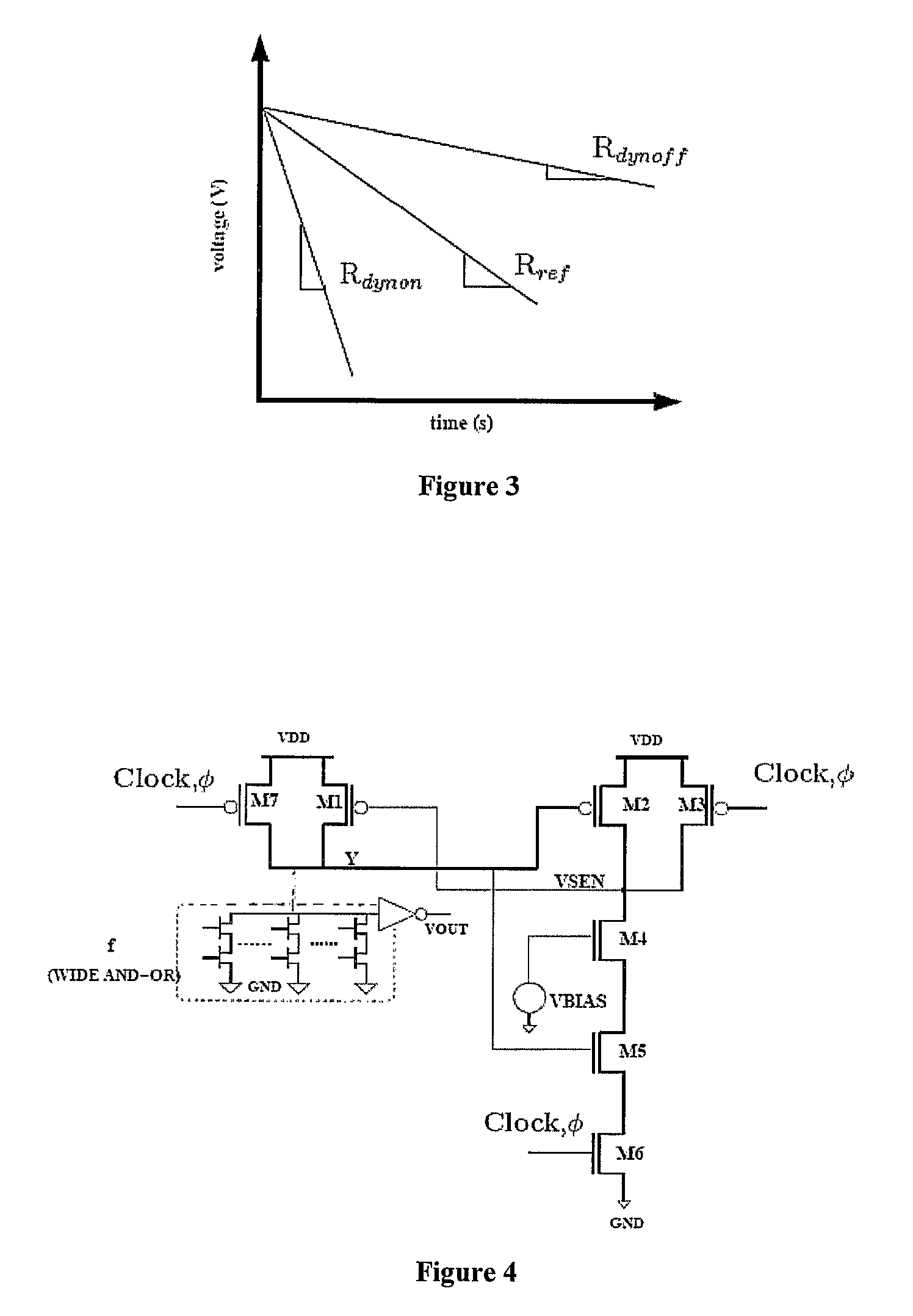Adaptive keeper circuit to control domino logic dynamic circuits using rate sensing technique
a dynamic circuit and keeper circuit technology, applied in the direction of power consumption reduction, pulse technique, instruments, etc., can solve the problems of large degradation of chip performance, affecting the yield of chips, and prone to leakage and other coupling noises, so as to reduce contention, reduce power and delay, and reduce the overhead in area
- Summary
- Abstract
- Description
- Claims
- Application Information
AI Technical Summary
Benefits of technology
Problems solved by technology
Method used
Image
Examples
Embodiment Construction
[0029]The primary embodiment of the present invention is an adaptive keeper circuit to control Domino Logic Dynamic Circuits using Rate Sensing Technique to provide reduced contention and efficient process tracking at a given noise robustness with less overhead in area, power and delay, said adaptive keeper comprising, keeper PMOS transistor (M1), wherein the drain of M1 is connected to wide AND-OR logic circuit; the rate controller consisting of reference rate transistor (M4), feedback PMOS transistor (M2), feedback shutoff transistor (M5), clock shutoff transistor (M6), pre-charge PMOS transistor (M3), wherein the input of the rate controller is directly connected to drain of the keeper PMOS (M1) and the output of the rate controller is directly connected to the gate of the PMOS keeper (M1),
[0030]In yet another embodiment of the present invention, the technique exploits the differential rate of change of output for two cases preferably logic 0 and logic 1.
[0031]In still another em...
PUM
 Login to View More
Login to View More Abstract
Description
Claims
Application Information
 Login to View More
Login to View More - R&D
- Intellectual Property
- Life Sciences
- Materials
- Tech Scout
- Unparalleled Data Quality
- Higher Quality Content
- 60% Fewer Hallucinations
Browse by: Latest US Patents, China's latest patents, Technical Efficacy Thesaurus, Application Domain, Technology Topic, Popular Technical Reports.
© 2025 PatSnap. All rights reserved.Legal|Privacy policy|Modern Slavery Act Transparency Statement|Sitemap|About US| Contact US: help@patsnap.com



